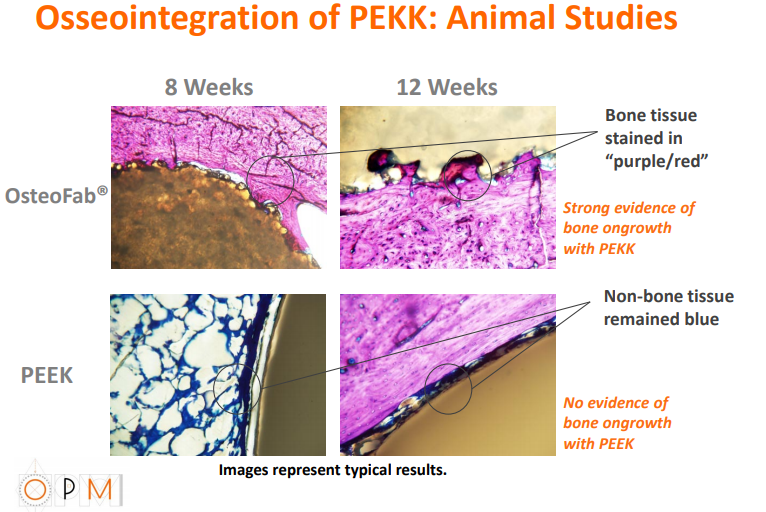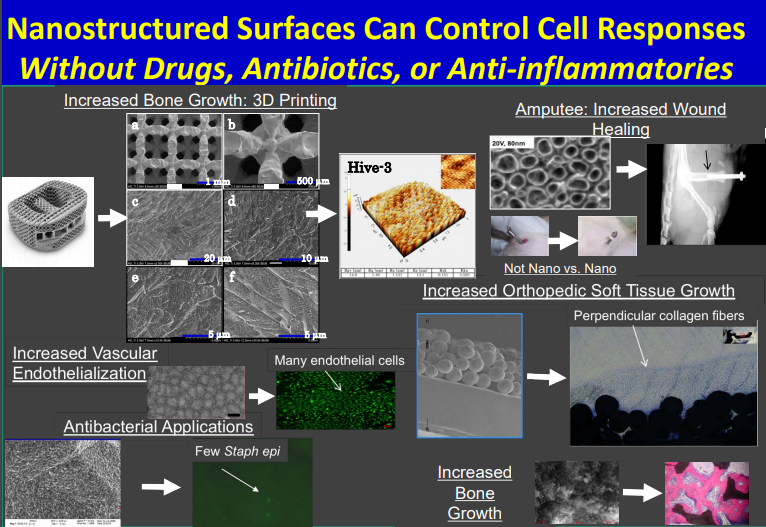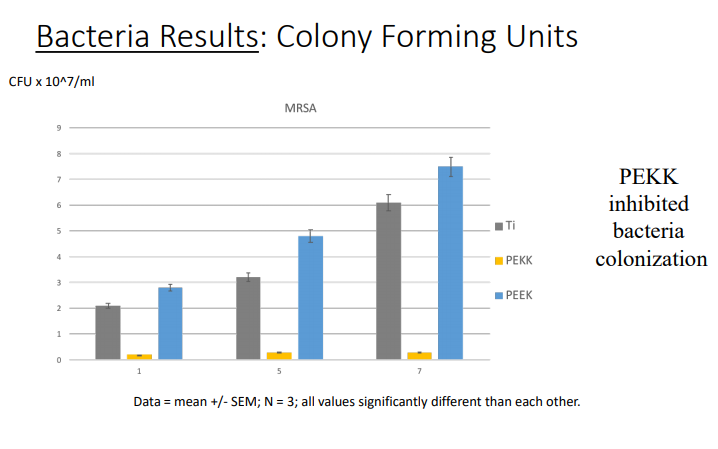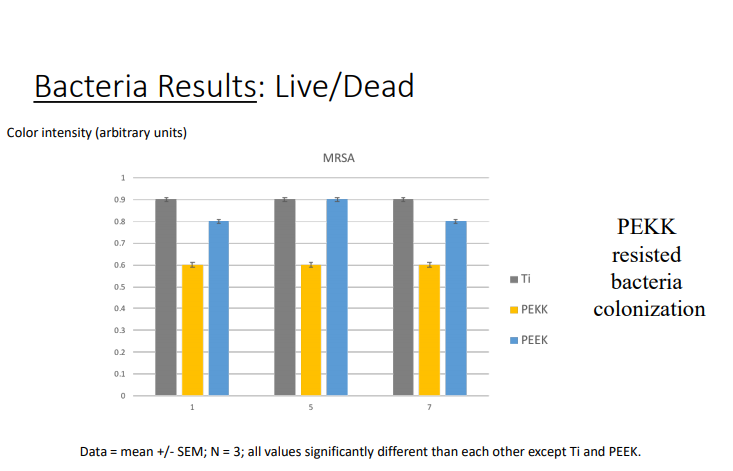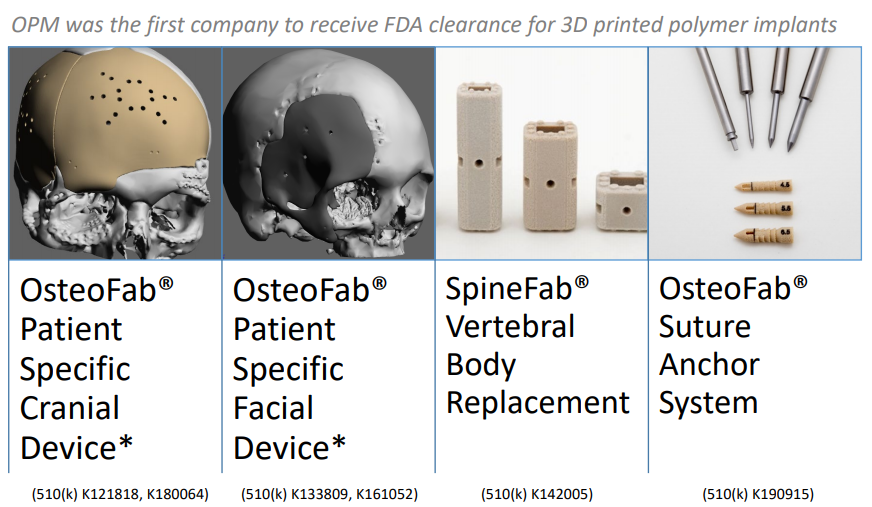AM Medical Virtual Summit: Northeastern University & OPM Discuss Bacterial Inhibition via 3D-Printed PEKK
Oxford Performance Materials (OPM) presented new findings on 3D printing with biocompatible materials at the AM Medical Virtual Summit. Focused on the fabrication of medical implants for bone regeneration, the Windsor, Connecticut-headquartered company attended the conference with James Porteus, Director of Engineering, Oxford Performance Materials, Inc., Israr Kabir, Business Development Manager, ASME, and Thomas Webster, Art Zafiropoulo Chair and Professor at Northeastern University leading the presentation on ‘3D Printed PEKK Polymer: Enabling a Family of Medical Devices that Inhibit Bacterial Growth without the Use of Antibiotics.’
PEKK (poly-ether-ketone-ketone) was at the center of the presentation. Porteus began by explaining that as a 3D-printed material, PEKK has been found to be amenable to bone integration, ongrowth, and ingrowth—while also presenting antibacterial qualities.
Quality of bone and integration are critical also, and both aspects were examined comprehensively during research with an ovine model—again showing ‘notable’ ingrowth when compared to other popular AM materials such as titanium and PEEK.
As Thomas Webster explained, biocompatibility and bone growth is one major advantage with PEKK; however, just as important is the collaborative research between Northeastern University and OPM in bacteria inhibition studies. Sharing CDC data, Webster states that it is expected that more people will die from antibacterial-resistant bacteria than all cancers combined by the year 2050.
Properties such as those found in PEKK assist in wound-healing applications, devices created for amputees, and medical equipment like catheters. Webster went on to explain that nanofeatures, found all over nature—from the wings of a cicada to a locust—provide antibacterial properties as surface energy is manipulated in a streamlined manner. The researchers noted that PEKK not only allows greater adsorption of antibacterial proteins like casein—but also mucin and lubricin.
“We are seeing great ability to control cell function, whether it’s decreasing bacteria, decreasing inflammation, or promoting tissue growth just using nanotextures without drugs,” said Webster. “What we are finding is nanotextures are a great thing. If you can create them appropriately, if you have a process that can create them and a material that can have nanostructure features, we are seeing properties with increased bone growth on 3D printed metals.”
Numerous in vitro responses to PEKK showed that without antibiotics, PEKK inhibited bacteria colonization—compared with other materials like titanium and PEEK in the presence of staphylococcus, pseudomonas aeruginosa, and methicillin-resistant staphylococcus aureus (MRSA); it was noted also that for MRSA, the great decrease was noted with PEKK samples. Taking the COVID-19 pandemic into consideration also, the researchers are now becoming more curious about exploring the effects of materials like PEKK on viruses.
“Of those cells, a significantly lower number are alive,” states Webster, further discussing the advantages of PEKK in comparison to titanium and PEEK.
In closing, Webster stated that one of the major results of the study was in understanding the ‘mechanism of action’ for PEKK as it allows for better adsorption of antibacterial proteins.
We have followed the research of OPM for years, as well as Northeastern’s advances in 3D printing. What do you think of this news? Let us know your thoughts! Join the discussion of this and other 3D printing topics at 3DPrintBoard.com.
[Source / Images: ‘3D Printed PEKK Polymer: Enabling a Family of Medical Devices that Inhibit Bacterial Growth without the Use of Antibiotics’ – as presented on May 27th, 2020 at the AM Medical Virtual Summit]
Subscribe to Our Email Newsletter
Stay up-to-date on all the latest news from the 3D printing industry and receive information and offers from third party vendors.
Print Services
Upload your 3D Models and get them printed quickly and efficiently.
You May Also Like
Making 3D Printing Personal: How Faraz Faruqi Is Rethinking Digital Design at MIT CSAIL
What if your 3D printer could think more like an intelligent assistant, able to reason through a design idea, ask questions, and deliver something that works exactly the way the...
Reinventing Reindustrialization: Why NAVWAR Project Manager Spencer Koroly Invented a Made-in-America 3D Printer
It has become virtually impossible to regularly follow additive manufacturing (AM) industry news and not stumble across the term “defense industrial base” (DIB), a concept encompassing all the many diverse...
Heating Up: 3D Systems’ Scott Green Discusses 3D Printing’s Potential in the Data Center Industry
The relentless rise of NVIDIA, the steadily increasing pledges of major private and public investments in national infrastructure projects around the world, and the general cultural obsession with AI have...
Formlabs Teams Up with DMG MORI in Japan
In late June, Nick Graham, Chief Revenue Officer at Formlabs, announced on LinkedIn that the company had partnered with DMG MORI, one of the world’s leading machine tool companies, to...



